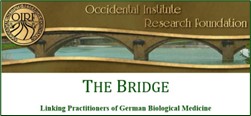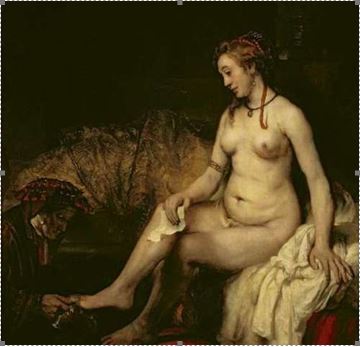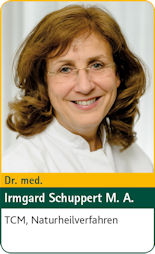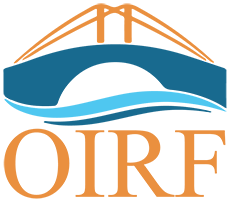Better Results through Holistic Treatment!

Annually approximately 72,000 women in Germany fall ill with breast cancer and are usually treated according to the scientific guidelines. According to the statistical yearbook of the [German] Federal Government, approximately 18,000 women die annually of breast cancer, which is 25% of the new illnesses. Reason enough to think about alternative therapies. [A]
During 2012 the therapy courses of the patients with breast cancer treated in our [practice] were evaluated by a doctoral candidate from the University of Cologne (Department of Medical Statistics). In a retrospective evaluation of the therapy courses over the previous 10 years, the women who came into our treatment post-operative tumor free achieved a 5-year survival rate of 96% (see also www.praxisklinikbonn.de – publications).
60% of these patients had waived chemotherapy. These results show that a critical outlook is absolutely advisable when compared with the guideline-compliant treatment used by default in most hospitals.
The annual deaths from breast cancer in 1980 stood under 15,000, and are now more than 18,000 [1]. Under the circumstances you can hardly speak of medical progress. In the same time period the industry multiplied their sales volume with breast cancer patients. In the comparison period the annual number of deaths in road traffic sank from 20,000 to 3,000, but this progress was also targeted.
How “Guidelines” Can Often Develop
Patients with a cancer condition usually do not understand everything that proceeds around them. They hear their case discussed in detail in a tumor conference together with other physicians. They do not know that these conferences are compulsory events for the already overburdened hospital physicians so that the hospital can be decorated with the title “breast center”. They try to handle these deadlines as fast as possible, in order to then get back to their stations. Thus in an hour 30 or more patients are discussed and the therapy is “fixed”, only according to the written findings and without participation of the affected persons.
However, not only hospital physicians participate in these conferences, but also the established oncologists and radiation therapists. They maintain contact with the hospitals, in order to have the patients assigned from there, with whom they make their money.
For the oncologist their salary depends upon which therapy they apply with the patients. To their quarterly budget of approximately €40/patient they additionally receive €250 per quarter in which they apply chemotherapy, for work that is carried out almost exclusively by assistant personnel. The treatment of a patient without chemotherapy would hardly be cost-covering economically for them and thus of little interest.
Also the radiation therapists live better if they “post-irradiate” as many patients as possible. Hence they will often advise radiation therapy. The consideration between the use and the risk of these measures should actually be made through economically neutral facilities, so that the patients are protected against unnecessary over-therapy that is rich in side effects.
The magic word in recent years is the “Guidelines”. They are provided to hospital physicians and are occasionally adapted by a committee of “experts” to reflect their opinion. These are the recommendations by which the active oncology physicians should be oriented. In the “breast centers” these guidelines are treated mostly like directives according to which the physicians have to determine the therapy.
Problematic in these guidelines which arose from German and also American examinations is that the opinion-forming experts were often subject to “conflicts of interest”. In the German evaluation [2] 85% of authors stated conflict of interest, half “financial conflict of interest”, i.e. they obtained allowances from the industry whose interest was that as many sales generating therapy recommendations as possible were included in the guidelines. Thus for 20 years 4 chemotherapies as breast cancer post-treatments (so called “adjuvant chemotherapy”) were recommended, and even today there are 16 or more chemotherapies. Nevertheless, the number of breast cancer deaths per year has not changed.
A study about the frequency of financial conflicts of interest by the authors of US-American guidelines for solid tumors was reproduced in November 2016 in the German edition of “Arzneimittelbrief”. There 86% of the 125 authors of the 4 guidelines, had indicated a “financial conflict of interest”. In total 30.39 million US dollars were paid out by the industry to these authors (thus on average about $240,000 per physician). There are no figures given about the level of allowances to German physicians.
Politics and Industry: An Unfortunate Combination
Cancer patients are also not protected by politics. All studies in Germany for pharmaceutical effect are carried out by the pharmaceutical industry. They decide which results are published and which are not. The results of these studies determine the licensing of the drugs for the German market. If it is allowed, the health insurance companies, into which according to law all Germans are forced, must take over the cost for it. And, the pharmaceutical industry can determine the prices at their own discretion – a perfect self-service store for the hard-won progress but therefore for the steadily rising health insurance premiums of the workers.
However, the unfortunate amalgamation of politics and industry is not the only problem. Another one is that neither politics nor the medical profession have become strong on behalf of a holistic medicine oriented to the causes of disease.
Cancer is More Than Just a Local Disorder
The first problem with the medical guidelines is that school medicine does not yet realize that breast cancer is not only concerned with a disorder lying in the mammary gland, but also that the tumor formation there is to be viewed only as the local symptom of a total burden on the organism, which can lie in different regions of the body or also in the mental range.
Accordingly their treatment is also orientated only on the symptom, on the breast and the tissues found there. What the situation is for the rest of the organism is not considered.
The second problem of the medical guidelines is that they are not oriented with the therapy recommendations from the knowledge about tumor metabolism well-known for 80 years. Already 60 years ago Seeger proved that cancer cells in an oxygen-rich environment can develop back into normal body cells [3]. Today this knowledge is a fundamental approach for holistic cancer therapy in metastasis prophylaxis.
The third problem is that school medicine clings to the system of the destruction strategy, which for 70 years has proven to be extremely side effect rich, has grown more and more expensive and above all is ineffective [4]. The fear of cancer by many people is justified by the lacking success and the extreme burdens of this therapy, but also lies in the increasing loss of trust in school medicine cancer therapy, which is seen as primarily profit oriented.
The fourth problem is the insufficient post-controls [follow up checks] established in the guidelines during the years after the primary cancer therapy. If you limit the post-controls only to the breast and carry out no laboratory investigations, you will often recognize a beginning metastasis formation outside of the breast – thus possibly in the liver or in the bones – only when an effective treatment is no longer possible.
With Optimal Therapy No Woman Should Die of Breast Cancer
 What is an optimal therapy? We think we are clearly closer to this claim than the school medicine guideline treatment, and our statistically evaluated treatment results prove this. Therefore I would like to briefly describe (and please do copy) what our treatment strategy is:
What is an optimal therapy? We think we are clearly closer to this claim than the school medicine guideline treatment, and our statistically evaluated treatment results prove this. Therefore I would like to briefly describe (and please do copy) what our treatment strategy is:
At first we would like to understand why this woman has developed a cancer illness. Therefore it is necessary to take at least one hour’s time together with the patient to analyze the time before the illness, above all the last 2 to 5 years in accordance with physical or mental kinds of disturbances, which could have something to do with the cancer genesis [B].
In our patients we have found with 60% of the ill women mental disturbances in the approach of the illness. These patients have also shown a three times higher metastasis rate, than the psychically stable patients. Therefore the topic of the psyche stands in a foremost place for us.
It was remarkable that many of the breast cancer patients had already experienced a traumatization during their early years, i.e. in the family, and thereby had already been destabilized early. Then later if it comes to a strongly renewed psychological disturbance situation – the somatization of the disturbance – it thus seems to favor the formation of physical symptoms.
The Therapeutic Approach in Clinical Practice
At the physical level we search for the chronic inflammation foci, i.e. under root dead teeth, or for functional disturbances, i.e. in the bowel which is our most important immune organ besides the thymus.
By then carrying out the MORA BioResonance testing we search for disturbances from toxins, i.e. from amalgam or also for causes of the bowel disturbances. Often allergies to wheat or cow’s milk products are found here. The consequences are then the abnormal [bacterial] colonization of the bowel with a weakened function of the bowel-related immune system.
Besides the consequences of stress disturbances, other fundamental causes for the formation of illness are toxins and deficiencies of vitamins and trace elements.
The quality of our food has a great influence on our health and the ability of our body to cure itself and to fight off diseases. Excessive consumption of qualitatively inferior food produces deficiency symptoms in important vital materials and causes diseases. Also toxins in our food have an effect on our health. Many preservatives are deadly poisons which are added to food in order to kill microorganisms. If these toxins kill these tiny living beings, they can also kill our cells, and they do exactly that. The meat which is offered to us in supermarkets at ridiculous prices is full of animal drugs and hormones.
Most preservatives and artificial food additives in high doses cause proven cancers and other damages. If we refuse the consumption of all potentially detrimental food and take only healthy food for ourselves, the body is capable of detoxification and self healing. Degenerative illnesses and infectious diseases can be prevented or be healed, and disturbances which are ascribed to the aging process can be cancelled [5].
Also the uncritical long term consumption of drugs rich in side effects leads to an accumulation of toxins in the body and makes us sick in the long run. Also even if it is very much promoted by the medical profession for a long term therapy, many of these drugs are unnecessary and generally noxious. Here rather it is a matter of removing the causes of the symptoms instead of suppressing the symptoms medicinally. (People reach the highest age in areas of Asia, e.g. in Azerbaijan, where a medical supply hardly exists.)
Therefore in our point of view it is an important measure to stop taking these drugs or to move patients to side effect free drugs. Moreover, inevitably it is a radical changeover of nutrition to qualitatively high quality and uncontaminated food.
Therapeutically we then administer to the patient natural healing remedies, infusions which promote the detoxification of the body and also compensate suitable deficiencies identified by laboratory examination.
Another fundamental therapeutic measure is the improvement of the oxygen supply to the cells through Ozone-Oxygen Therapy. Already 90 years ago the tumor metabolism was described by Otto Warburg (Nobel Prize 1931) and Seeger as a consequence of cell respiration disorder. I have extensively explained this somewhat complex topic on our homepage (www.praxisklinikbonn.de).
For the treatment of psychological disturbances, two psychiatrists work with us.
In cases where the patients already have developed a distant metastasis, we see no other possibility, first of all to win time, than to carry out some chemotherapy, however always supported by the local deep hyperthermia. The chemotherapy dosages can thereby be held low and their side effects reduced. Following that we try to hold the result.
For this we make use of various unconventional measures like infusions with Amygdalin, Dichloracetate, high doses of Vitamin C or plant extracts such as Artemisia, etc.
On top of all that regular blood tests are carried out in order to see about various direct and indirect tumor markers, whether a metastasis is forecast as the therapy progresses, or whether we must still employ e.g. Mistletoe or Thymus extracts for improvement of the immune system.
Therapy Course Controls
Especially important for us also with female patients who are tumor free after the operation are regular 3-monthly [therapy] course controls by a 3D Color Ultrasound checkup. Even if once again another local occurrence of a cancer in the breast area should form, or even a metastasis in the liver or in the bones, the treatment is so much more promising, the earlier the metastasis is detected. For this regular blood tests are indispensable. If you limit yourself only to mammography, as intended in the guidelines, you will hardly be able to recognize, e.g. an osseous metastasis or liver metastasis so promptly that you can still save the patients with a purposeful therapy. And, still carry out not only a “palliative” therapy and with it the less useful chemotherapy. The futility of chemotherapy in a metastasis situation was already extensively explained in a “Der Spiegel” article [4] in October 2005.
Conclusion
As already indicated above, we can prove that a clearly better survival rate for breast cancer patients can be achieved through such actions, and that although (or because) only 40% of the female patients had received chemotherapy.
The patients who were tumor free after the operation and still underwent chemotherapy, had about a 70% higher distant metastasis rate than the patients who had refused the chemotherapy. Strictly speaking, logical, or?
 An Exclusive Translated Article for OIRF Supporters
An Exclusive Translated Article for OIRF Supporters
From THE BRIDGE Newsletter of OIRF
Published August 2017
From an article in Naturheilkunde Journal, Volume 19, May 2017
Machine Translation by SYSTRAN, Lernout & Hauspie, LogoMedia & Promt
Translation & redaction by: Carolyn L. Winsor, OIRF
© Copyright 2017, Drs. Achim and Irmgard Schuppert, Bonn, Germany
Literature:
- Statistische Jahrbücher der Bundesregierung
- Deklaration und Umgang mit Interessenkonffikten in deutschen Leitlinien. Deutsches Ärzteblatt Jg. 112, Heft 26, Juni 2015,445-451.
- Seeger; PG.: Krebs-Problem ohne Ausweg?, 1974, Haug Verlag
- Metastasiertes Mammakarzinom: Keine Lebensverlängerung seit 20 dt. Ärzteblatt, Jg. 102, 40, A2706-A2714
- Fife, Bruce: Das große Detox-Buch, Kopp Verlag
Paintings:
[A] Portrait of a Nude Woman, the Fornarina. Raffaello Sanzio, 1518-20
[B] Everywoman has her own personality and history. A young woman in her toilet, 1515, Giovanni Bellini, Vienna.

[C] In 1654, Rembrandt van Rijn painted his famous Bathsheba, which depicts King David’s wife naked at her bath. The painting has been regarded as an icon for breast cancer since the 1980s, after two Australian surgeons had interpreted the blue mark on her breast as breast cancer and wrote an article about it. Now, with the help of computer simulations, researchers from the MIRA research institute at the University of Twente have demonstrated that it is ‘highly unlikely’ that the blue mark on Bathsheba’s breast really was caused by the disease. Not that the information is really of any use to the patient: she died several centuries ago. The results of the research are published in the Journal of Biophotonics.
The model posing as the bathing Bathsheba is very probably Hendrickje Stoffels, Rembrandt’s lover. A notable aspect of the painting is that the underside of her breast is blue, and that a swelling can be seen under her left armpit. Two Australian surgeons concluded from this that the woman who modeled for the portrait was almost certainly suffering from breast cancer. Since then, the painting has become a well-known symbol of the disease


 Achim Schuppert, MD has worked as an established specialist for general medicine and natural healing therapy since 1984. In addition to his numerous continuing education courses in the areas of biological cancer therapy, ozone therapy, chirotherapy, homeopathy, acupuncture, FX-Mayr therapy, neural therapy, cell therapy, BioResonance therapy, dietetics and psycho-oncology, the reopening of the Praxisklinik followed in 2004 with advanced offerings like a cancer day-hospital and TCM departments, gynecology, cardiology, holistic medicine, cause-diagnostics and laboratory and travel medicine. In addition, Achim Schuppert is a Board Member and Scientific Advisory Board Member of the Society for Ozone and Oxygen Applications in Medicine and a Board Member of the German Society for Oncology.
Achim Schuppert, MD has worked as an established specialist for general medicine and natural healing therapy since 1984. In addition to his numerous continuing education courses in the areas of biological cancer therapy, ozone therapy, chirotherapy, homeopathy, acupuncture, FX-Mayr therapy, neural therapy, cell therapy, BioResonance therapy, dietetics and psycho-oncology, the reopening of the Praxisklinik followed in 2004 with advanced offerings like a cancer day-hospital and TCM departments, gynecology, cardiology, holistic medicine, cause-diagnostics and laboratory and travel medicine. In addition, Achim Schuppert is a Board Member and Scientific Advisory Board Member of the Society for Ozone and Oxygen Applications in Medicine and a Board Member of the German Society for Oncology.
